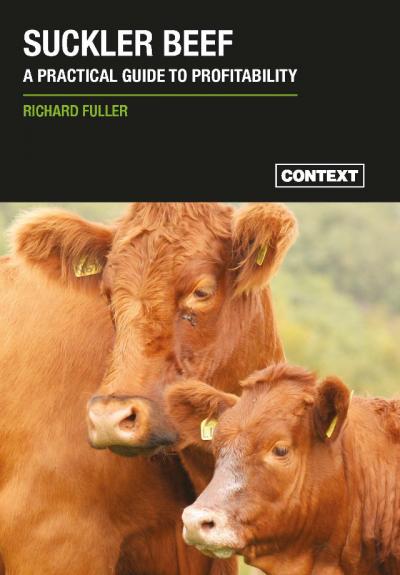
Suckler Beef - A Practical Guide to Profitability
Richard Fuller
This book looks at the UK Beef industry and it's international marketability. Covering farm management, production principles, genetic evaluation and efficiency
$39.20
$47.04
“Suckler Beef - A practical guide to profitability” offers tips on every aspect of production including profit drivers, suckler cow management, replacement heifer management, calf management, genetic evaluation, sire selection and management. In each chapter, the key factors are discussed and best practices and guidelines are explained in an easy to understand manner. This text offers something for the full range of farmers from the beginner, who needs to know the basics, to the experienced farmer, looking to fine tune his techniques.
"This guide is one of the most concise and useful books on cattle production that I have ever encountered" - says Lee Leachman from Leachman Cattle of Colorado.
Its focus is simple: What is the most profitable model for beef production in the UK, and how do you build it? Based on a lifetime of astute observation by Richard Fuller, this book offers practical advice that has been proven in the field, not just studied in the classroom. For thousands of years, man has been captivated by breeding and improving cattle. In the early days, cattle represented valuable sources of milk, protein, and farm work while being an effective way to store wealth. Then came the modern annals of breed formation and improvement. The very first breeders of pedigree stock sought a uniform type and kind.
Only within the last two hundred years did cattle production turn into a source for mass food production. Farmers began to produce far more beef than they could eat themselves or even consume within their local village. Instead, the production was developed to supply beef to the growing urban populations. With this shift, came the inevitable quest to make the beast better at producing beef. As home to many of the dominant temperate region breeds including Angus and Hereford, few, if any, countries enjoy a more storied history in cattle breeding than does the UK.
In the late 19th and 20th centuries, UK stockmen gained a strong worldwide reputation for their good cattle, keen eye, and professional herdsman abilities. However, their leadership and global importance waned near the turn of the century as spiraling land values, decades of EU subsidies, BSE, and a quest for leaner, heavier muscled carcasses made them less and less competitive in the global beef market.
Today, a small cadre of dedicated beef farmers continues the long tradition of cattle breeding in the UK. Their struggle is significant, but they are resolved and dedicated to continue turning grass into beef. Their worthy goals are to preserve their heritage, their land, and their family’s way of life. This work, “Suckler Beef - A Practical Guide to Profitability” by Richard Fuller, is designed to aid and encourage this group of beef farmers.
‘’Suckler Beef’’ is one of the most concise and useful books on cattle production. Its focus is simple. What is the most profitable model for beef production in the UK and how do you build it? Read it. Read it again. Mull it over. Talk about it with other farmers. Put it into practice. Then, you will see the results in your own herd on your own farm!
- Chapter 1 16 - 31: The Principles of Production
- Chapter 2 32 - 53: Management of the Suckler Cow
- Chapter 3 54 - 61: Heifer Replacements
- Chapter 4 62 - 67: Managing the Suckled Calf
- Chapter 5 68 - 77: Genetic Evaluation
- Chapter 6 78 - 85: The Herd Sire
- Chapter 7 86 - 93: Finishing Suckled Calves
- Chapter 8 94 - 99: Net Feed Efficiency
- Chapter 9 100 - 109: The Stabiliser™ Story
- Chapter 10 110 - 127: The Stabiliser™ Philisophy
"This is a most impressive publication by an author who has the knowledge and experience to stimulate the reader – be they a farmer, consultant, student or lecturer. I would have been more than pleased to have a copy when lecturing on the subject years ago! The layout and presentation is modern, most attractive and enhanced by excellent images, graphs and tables. The use of colour for each Section is most helpful to the reader, as are the highlighted, bracketed key statements. The content is comprehensive, in a logical order and demonstrates that with excellent management and control, a suckler beef enterprise can in fact be profitable. The Author explains clearly the importance of using new technologies to produce animals which meet market requirements, as well as the essential need for a moderately sized cow which can be achieved by establishing a composite breed.
I congratulate the publishers on a stimulating, well presented book and especially Richard Fuller – Master Breeder, Great Author and Excellent Photographer."
Prof J Malcolm Stansfield MBE
Published: 2018
ISBN: 9781899043767
Details
Type: Paperback
Pages: 132
Language: English
Format: Paperback
Availability: Available
About the author
Richard Fuller left Harper Adams Agricultural College in 1964 and embarked on his ambition to become a farm manager.
After several jobs gaining livestock and arable experience he was, in 1974, offered the position as Farm Manager by JSR Farms to manage their 1000 acre Givendale Farm in East Yorkshire.
Givendale is a hilly, half grass, half arable farm situated on the western slopes of the Yorkshire Wolds. This gave Richard the opportunities he needed to develop his interests in beef breeding and farm conservation.
He soon developed a suckler herd of 150 commercial cows followed by the establishment of a 100 cow pedigree Charolais herd.
Richard became focused on improving the performance of the herds by recording individual animal data. His motto has always been ‘if you don’t measure performance, how can you improve it?’
His approach to recording herd performance and breed improvement was recognised in 1983 when he was presented with the MLC/BGS Grass to Meat Award.
Cattle breeding is a slow process but Richard’s patience and determination eventually led to the formation of the Beef Improvement Group in 1997. The focus of this group of five farmers was to improve the profitability of their suckler herds by focusing on the maternal traits of the cows.
Richard’s quest to find the ideal cow led him to the USA where he found what he was looking for - a composite beef cow with all the attributes required to develop a super-efficient suckler beef system.
He describes, in this book, how he developed this revolutionary breeding approach at Givendale.
Richard is a true countryman, an accomplished wildlife photographer and he was a pioneer of farm conservation, joining the first Countryside Steward Schemes in the early 1980s. His conservation work was recognised in 1995 when he was presented with the Booker Silver Lapwing Award, a very proud event in his life.
He is a Fellow of the Royal Agricultural Society and his contributions to the beef industry have been recognised twice by RASE. Once in 2004, when he was presented with their Excellence in Practical Farming Award, followed later in 2016 by theirTechnology Award.
In 2017 Richard was deeply honoured when Lee Leachman presented him the Leachman Hairpin Award at an event in Fort Collins, Colorado for ‘Outstanding vision and discipline in spreading Leachman genetics in the UK and Europe’.
Richard is semi-retired and lives in Snowdonia with his wife Fran, where they enjoy tending their large garden, cycling, and where he enjoys sea fishing from his boat ‘Dreamcatcher’, and pursuing his life-long passions for photography and bird watching.
Further information on the book
Contents
- The Principles of Production
- Management of the Suckler Cow
- Heifer Replacements
- Managing the Suckled Calf
- Genetic Evaluation
- The Herd Sire
- Finishing Suckled Calves
- Net Feed Efficiency
- The Stabiliser™ Story
- The Stabiliser™ Philisophy
Delivery
This book weighs: 600g
Delivery rates
| Region | Cost |
|---|---|
| UK | $7.00 |
| Europe | $18.90 |
| USA and Canada | $18.20 |
| ROW | $19.60 |
| ROW2 | $43.40 |
Shop By
> Agronomy> Animal Health
> Animal Nutrition
> Context Directories
> Meat Inspection
> Aqua
> Beef
> Dairy
> Equine
> Goats
> Pets
> Pigs
> Poultry
> Rabbits
> Sheep
Related Titles
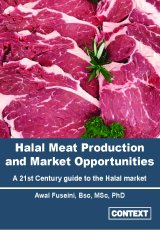
Halal Meat Production and Market Opportunities
By Awal Fuseini
$49.00
$58.80

Suckler Beef - A Practical Guide to Profitability
By Richard Fuller
$39.20
$47.04

Modern Animal Production
By Sylvie Andrieu and Helen Warren
$21.00
$25.20
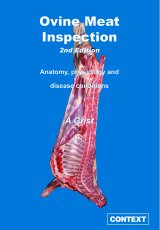
Ovine Meat Inspection - 2nd Edition
By Andrew Grist
$56.00
$67.20
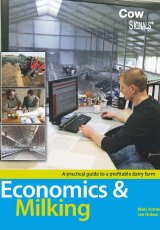
Economics & Milking
By Jan Hulsen
$39.90
$42.00
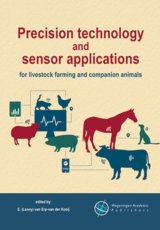
Precision technology and sensor applications for livestock farming and companion animals
By E. Van Erp-Van der Kooij
$48.30
$53.66
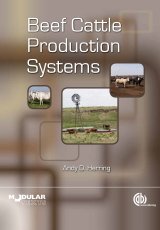
Beef Cattle Production Systems
By A Herring
$56.70
$62.65

Energy and Protein Metabolism and Nutrition EAAP 138
By Mario Luiz Chizzotti
$198.80
$220.50
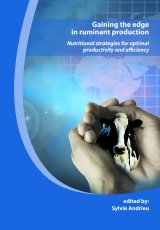
Gaining the Edge in Ruminant Production
By Sylvie Andrieu
$92.40
$102.66
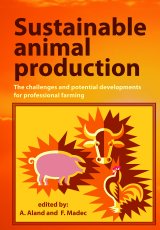
Sustainable Animal Production
By edited by A. Aland and F. Madec
$137.90
$152.84
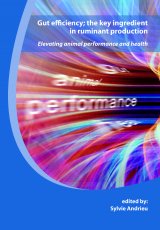
Gut Efficiency: the Key Ingredient in Ruminant Production
By S.Andrieu, David Wilde
$84.00
$93.34
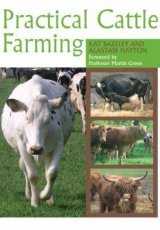
Practical Cattle Farming
By Bazeley , Hayton
$28.00
$35.00
Sorry. You need to upgrade your browser
You are using Internet Explorer 8
This is considered an out of date browser. This website has been developed with modern browsers in mind to allow it to display at its best in a wide variety of viewing situations - including mobile viewing. But we haven't supported older browsers like IE8. Please upgrade to the latest version of Internet Explorer - or try Mozilla Firefox or Google Chrome. Both are excellent browsers.
Thank you.





